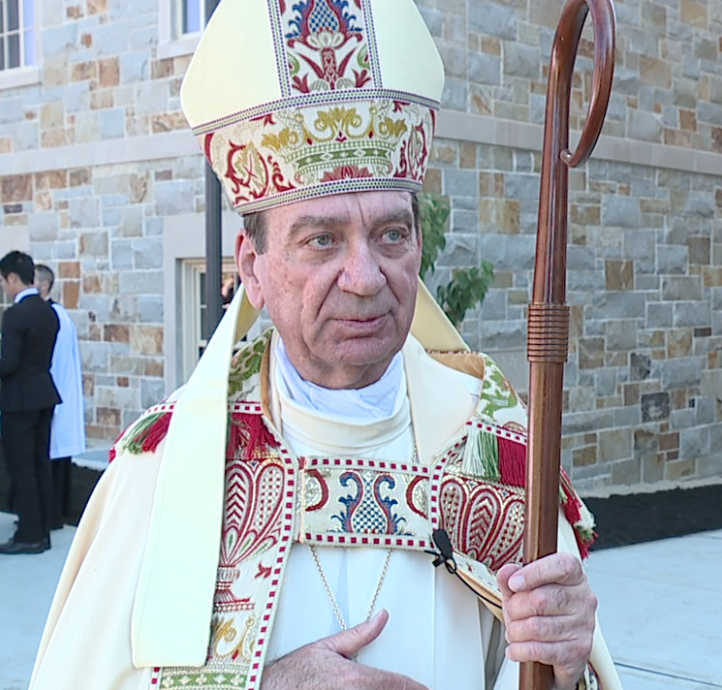CINCINNATI — There may be strength in numbers, but if you want your favorite church to survive the Archdiocese of Cincinnati’s new restructuring initiative, it might be safer to be “a family of one.”
St. John the Baptist in Harrison is one of eight Catholic parishes that will not be required to join with other churches in the far-reaching Beacons of Light initiative, unveiled Friday by the 19-county Archdiocese. The plan calls for 208 parishes to be combined into 60 parish families, which will be asked to share resources in the coming years and eventually merge into single parishes.
Pastoral Minister Eric Hollis said he was “happy to announce” the church’s status as a “Family of One Parish,” in a note to parishioners Friday.
“We are in one of the few areas of the diocese in which great growth has been and will continue to grow as development of subdivisions occur,” Hollis wrote. “We have shown that we are a very viable parish, able to thrive as a parish.”
Archdiocese spokeswoman Jennifer Schack said parish groupings were based on 30 different data points, including “ministry load” for priests, proximity of parishes, financial data, mass attendance and the capacity of church facilities.

In an interview on the Archdiocese web site, Archbishop Dennis Schnurr said the Beacons of Light plan is not focused on closing parishes, but that is likely to happen as parishes begin to work together.
“Over time, some family of parishes may come to the conclusion that we really don’t need all these campuses,” Schnurr said. “And then there may be the decision to reduce a parish church to the status of an oratory or a chapel. But that is going to be decided by the family of parishes. It’s not going to be decided by me or the Archdiocese of Cincinnati.”
In addition to St. John the Baptist, other churches that secured “family of one” status were St. Peter in Chains Cathedral Basilica Downtown, Good Shepherd in Montgomery, St. Maximilian Kolbe in Liberty Township, St. Susanna in Mason, St. Gertrude in Madeira, Immaculate Heart of Mary in Anderson Township and Holy Family Catholic Church in Dayton.
There are 17 parish families with five or more churches in their group, including one parish family in Dayton with 11 churches.
“You have to consider the situation of each parish,” said Rocco Palmo, a Philadelphia-based blogger who has 26,000 Twitter followers and has followed church consolidations nationwide. “In Detroit, there are some families that are just one parish because they’re sustainable as is. When you have many, if anything what that says is that the diocese has shown an immense amount of patience and has probably devoted central resources to basically subsidize these places to try and keep them going.”
Palmo praised Cincinnati’s restructuring initiative because the Archdiocese made church groupings widely available so it could seek public comments on them before finalizing them in November.
“I can’t remember effort like this,” he said. “It’s very rare to have a full draft out and basically say, ‘We’re willing to have it tweaked.’”
He also said Cincinnati’s reduction – from 208 parishes down to 60 parish families – is not as extreme as Detroit. It is shrinking from 216 parishes to 51 family groupings, even though it has more than 1 million Catholics, more than twice that of Cincinnati.
Pittsburgh announced a similar restructuring in 2018 that combined 188 parishes into 57 family groups, while New York “topped out around the year 2000 with 413 parishes. They’re now down to 288,” Palmo said.
“However you cut it, it’s draconian. But that’s been the case everywhere,” Palmo. “When you look at figures around the country, it’s actually not as drastic as it could have been.”
But none of that will console Cincinnati parishioners who see their favorite church close.
“The parish is the embodiment of the Catholic church for people. And so, you know, losing that again, it’s like a death in the family or worse,” Palmo said. “All of these churches are jewel boxes, built often late 1800s but with stained-glass windows from Germany and frescoed art from Italy and marble you can’t find. But it’s one thing to build a church. It’s another thing to maintain it.”
At Holy Family Church in Price Hill, parishioner Jake Murphy hopes the Beacons of Light initiative will result in the right metrics of a church’s vibrancy before taking steps to close one.

“I would say the community here is more vibrant than ever,” said Murphy, who got married at the Romanesque Renaissance church in 2019 and had his son Xavier baptized there in April.
As an anchor for the Price Hill Incline District and home to a growing congregation of Hispanic families, Murphy sees Holy Family as a “hidden gem” worth saving. And if it isn’t, he would like the Archdiocese to tell parishioners what they need to change to keep it alive.
“We usually go to the 11 o'clock, which is in Spanish and English. And that Mass is just packed,” he said. “Something my wife and I joke about is, there’s more kids than adults in the church. It doesn’t seem like one of the parishes they would choose to shut down.”





